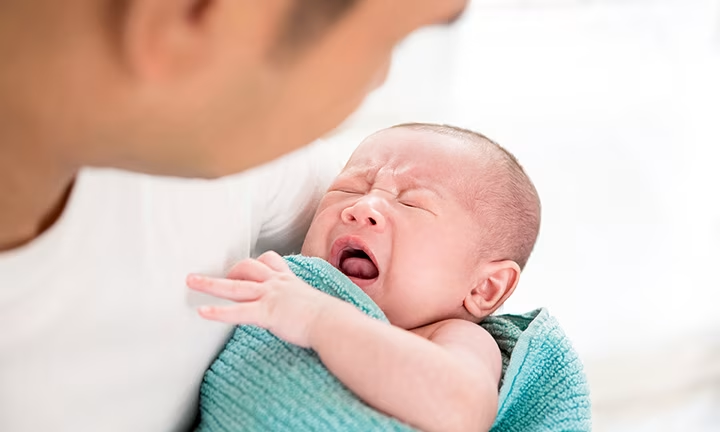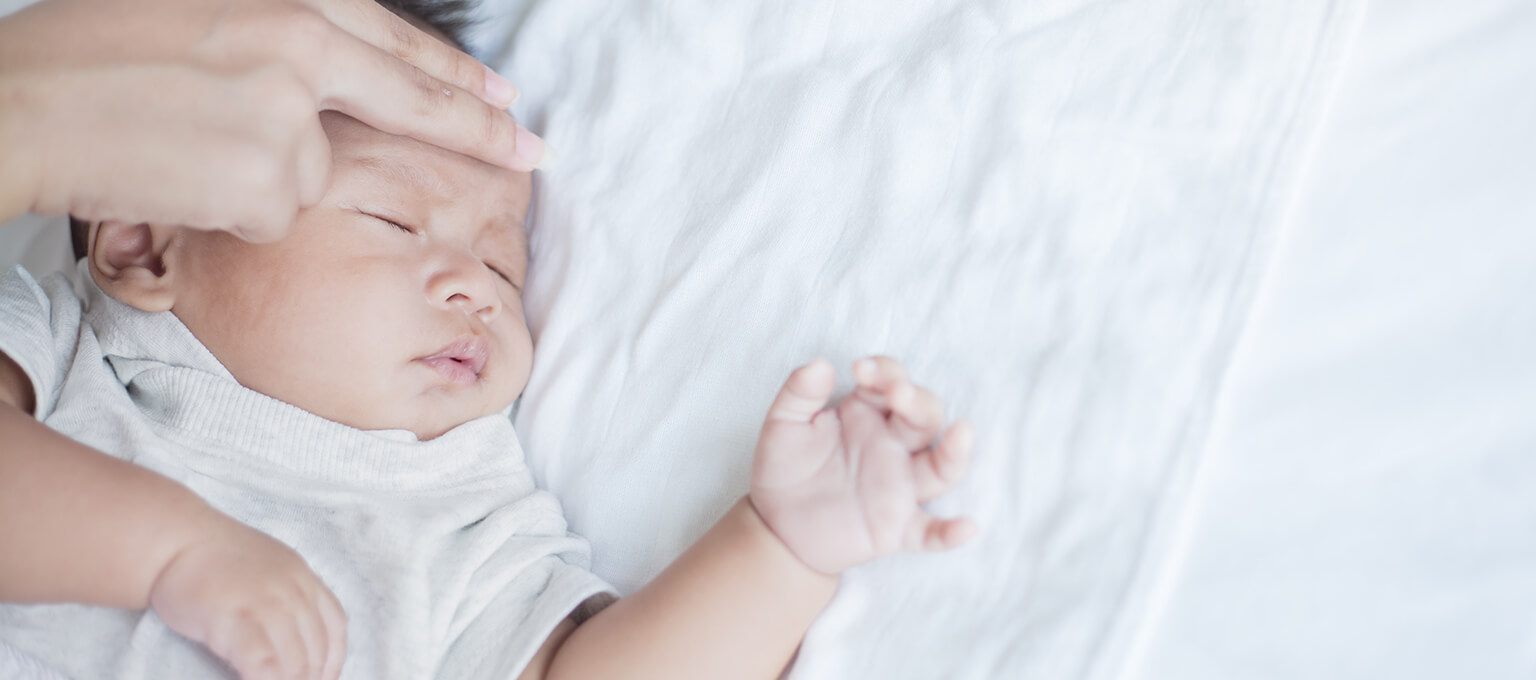
Hand, Foot and Mouth Disease Explained
Hand, Foot and mouth disease is a contagious viral infection that most often affects babies and young children and causes painful blisters and mouth ulcers. It tends to clear up within a week or so. Read on to learn more about the symptoms of hand, foot and mouth disease, its causes and treatment.
What Is Hand, Foot and Mouth Disease?
Hand, foot and mouth disease (HFMD) is a common childhood illnesses, although it can affect adults too.
HMFD often causes a rash as well as painful red spots and blisters on the hands and feet and in the mouth – hence the name. (Keep in mind, hand, foot and mouth disease in humans is not related to the ‘foot and mouth disease’ that affects farm animals.)
Although it can be uncomfortable for your baby or toddler, don’t worry: Hand, foot and mouth disease is typically a minor illness that clears up in a week or so without treatment.
Nonetheless, there are some things you can do to ease your little one’s discomfort until he or she gets better. Also, because hand foot and mouth is contagious, it’s important to take steps to prevent the infection from spreading to others.
Hand, Foot and Mouth Disease Symptoms
The first signs of hand, foot and mouth infection in your baby or toddler are often a
It can take a few days after your child is first infected for these early stage symptoms of hand, foot and mouth disease to start showing.
A few days after your little one comes down with the initial fever, the characteristic symptoms of hand foot and mouth usually appear. These can be
Keep in mind that your little one may display all or some or none of the above symptoms. In fact, around half of all adults have already had hand, foot and mouth disease at some time in their life without even knowing about it.
What Causes Hand, Foot and Mouth Disease?
Hand, foot and mouth disease is usually caused by a germ known as the Coxsackie virus, which can be transmitted via an infected person’s
Treatment of Hand, Foot and Mouth Disease
There’s no instant cure for hand, foot and mouth disease, but it usually clears up by itself in 7 to 10 days.
Treatment can be given to help ease the symptoms though. Ask your pharmacist or doctor what kind of pain relief medicine, ulcer gels, sprays or mouthwash are suitable for your baby, toddler or older child.
There are also some home remedies for the symptoms of hand, foot and mouth disease:
Potential Complications
Although hand, foot and mouth disease is usually a minor illness, it can sometimes worsen and cause more serious complications. The most common of these is dehydration, as the sores in your child’s mouth or throat can make swallowing painful.
To prevent this, make sure your child sips fluid frequently throughout the day while ill.
Signs of dehydration include:
It’s very rare, but sometimes a serious form of the virus that causes hand, foot and mouth disease can lead to these two complications:
When to See a Doctor
Hand, foot and mouth is usually a mild illness and clears up by itself in a week or so. However, there is a small risk of complications. Talk to your doctor or health visitor if you’re worried about any of your child’s symptoms.
Seek medical attention immediately if the symptoms don’t improve in 7 to 10 days or if your child
shows signs of dehydration
has a high fever that you can’t control
shakes uncontrollably
has a stiff neck
is bothered by light
seems dazed or confused
has a rash that doesn’t fade if you press a glass against it.
Prevention
The incubation period for hand, foot and mouth disease (the period when you have the illness but don’t yet show any symptoms yet) is three to seven days. People with hand, foot and mouth disease can be infectious for a few days before showing symptoms, while others can be infected (and spreading the virus) without symptoms at all.
This means it isn’t always possible to avoid everyone who may be carrying the virus that causes HFMD, so good hygiene habits – like handwashing after nappy changes, visits to the toilet or nose blowing – are the best way to keep the risk of infection to a minimum.
How to Help Prevent the Spread of HFMD
Hand, foot and mouth disease is infectious a few days before any signs of the illness appear, and the most contagious period lasts until around five days after the symptoms start.
During this period, especially, try to keep your baby or toddler away from others as much as possible. At home, this can be harder, but urge all family members to avoiding touching their eyes, nose and mouth to help reduce the risk of the virus spreading among family members.
Here are some other tips for helping prevent the spread of hand, foot and mouth disease:
Take extra care about handwashing during nappy changes, especially if one person is changing the nappies of more than one baby
During potty training, help your toddler get into the habit of washing his or her hands thoroughly after each visit to the loo
Make sure everyone else in your household washes their hands frequently
Always use a tissue to trap your little one’s coughs and sneezes and throw used tissues away immediately after using them
Wash toys in hot soapy water on a regular basis, and especially if they come into contact with saliva – for example if your baby has put a particular toy in his or her mouth
Don’t share towels, cups, plates or eating utensils
Wash soiled bedding and clothing with a hot wash cycle
Don’t send your little one to childcare while he or she is feeling unwell. Once your child is feeling better it’s usually OK to return, even if there are still some remaining blisters that haven’t healed over yet. Ask your doctor for advice if you’re unsure about when it’s OK for your little one to return.
Can Your Child Catch HFMD More Than Once?
After having hand, foot and mouth disease, your child is usually immune to the virus that caused the illness, so reinfection is less likely (compared to someone who’s never been infected).
However, different viruses can cause hand, foot and mouth disease so it is possible for someone who’s had the illness to catch it again, if exposed to a different strain of the virus.
FREQUENTLY ASKED QUESTIONS
- Give your baby plenty of fluids, to help prevent dehydration
- Feed your toddler soft foods like soup or mash, yoghurt or puree
- Ask your pharmacist or doctor what pain relief medicine, mouth ulcer gels or other treatments are suitable for your baby.
The Bottom Line
Hand, Foot and mouth disease is a common infection that usually goes away by itself in a few days. It’s no fun for you or your little one if he or she catches it, but things should return to normal and your baby will be smiling again soon enough.
Meanwhile, do all you can to make sure your child is comfortable and stays hydrated, and don’t hesitate to see a doctor if you’re concerned about any of the symptoms.
How we wrote this article
The information in this article is based on the expert advice found in trusted medical and government sources, such as the National Health Service (NHS). You can find a full list of sources used for this article below. The content on this page should not replace professional medical advice. Always consult medical professionals for full diagnosis and treatment.
Read more about Baby
Related Articles
Join Pampers Club and get:














